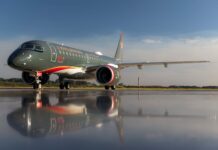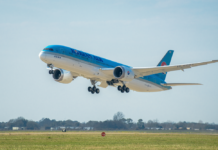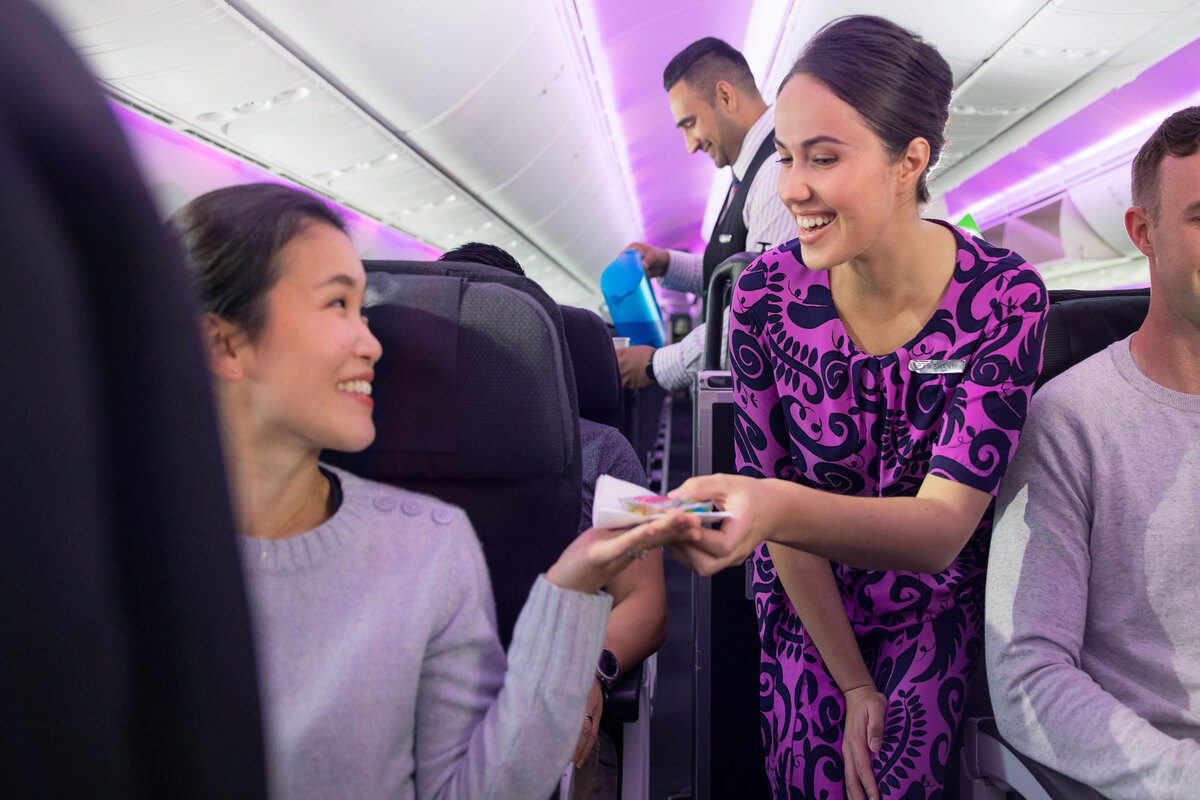Air NZ has blamed post-COVID inflation, supply chain issues and problems with GTF engines that power its A320neos for a profit decline.
Air NZ announced earnings before taxation of NZ$185 million for the first half of the 2024 financial year. with a net profit after taxation of $129 million.
The airline said this was an expected reduction on the comparable period last year when it recorded one of its highest-ever results following the rapid return of air travel as New Zealand’s borders reopened.
Passenger revenue of $3.1 billion was up 21 per cent, driven by a significant ramp-up in capacity across the international network. Demand was stable in most markets, but signs of softness in domestic corporate and Government demand were experienced from September. Overall capacity was up 29 per cent on the comparative six-month period. Operating costs, including fuel, increased by 21 per cent due to a substantial increase in long-haul flying this year.
The airline said that inflationary pressures also continue to be felt. Non-fuel operating costs have increased around 5 per cent or $100 million due to price inflation, which is on top of an increase totalling 15 to 20 per cent across the last four years. It added that the cumulative effect of these increases is having a significant impact on the cost of providing air services, including on the domestic network, and the airline is currently reviewing fares and capacity to better reflect ongoing cost pressure.
Chair Dame Therese Walsh said: “We knew this year would be tougher than the last, when pent-up levels of demand and industry-wide capacity constraints drove one of the strongest financial results in our history.
“And while we have reported a solid first-half result, it is against the backdrop of significant ongoing supply chain issues, particularly the additional Pratt & Whitney engine maintenance requirements on our A321neo fleet, which will see up to five of our newest and most efficient aircraft out of service at any one time across the next 18 months at least.
“On top of these operational challenges, we are now leaning into the reality of a worsening revenue and cost environment, which is expected to have a significant adverse impact on performance in the second half.
“Earlier this week the airline provided a full-year profit outlook, noting among other things, a deterioration in the forward bookings profile. Intense international competition features heavily in the current environment, particularly for North America where our US competitors have not yet returned to China at scale, and for now have directed some of that additional capacity to the New Zealand market, putting pressure on yields.
“The business is pulling multiple levers to mitigate the impact of these headwinds, and this is a key focus for the team.
“Despite these short-term challenges, the airline is in a fundamentally strong position. Our balance sheet is robust, and the Board is committed to the airline’s Capital Management Framework as announced last August, including its ordinary dividend policy. Accordingly, the Board was pleased to announce a dividend of 2.0 cents per share for the first half.”
Chief Executive Officer Greg Foran says doing the basics brilliantly without ever compromising on safety has positioned the airline well to compete.
“Our on-time performance and contact centre wait times have improved. Food and beverage offerings have been enhanced. Inflight entertainment options and Wi-Fi have also been improved. An additional 400,000 people have joined our loyalty programme over the past year, lifting membership to 4.4 million. All these things, along with the manaaki shown by staff – taking care further than any other airline – have seen our customer satisfaction score return to pre-pandemic levels.
“The engine maintenance requirements for both Pratt & Whitney and Rolls Royce have seen our aircraft spend more time on the ground. While this is beyond our control, we are managing these issues with changes to our schedule and additional leased aircraft.
“Boeing has now confirmed that the first of the new 787 Dreamliners is unlikely to arrive until at least mid-2025, which will delay delivery of our innovative new Skynest. The interior retrofit of our current 787 fleet remains on track.
“To mitigate these challenges, we introduced a dry lease 777-300ER in November. A second dry lease 777-300ER will enter the fleet mid-year and we are well advanced on negotiations for a third.
“While the global aviation ecosystem remains under immense pressure, Air New Zealand is committed to providing the best experience possible to our loyal customers while we navigate these issues.”
The airline said that the airline currently expects earnings before taxation for the 2024 financial year to be in the range of $200 million to $240 million.
Based on the airline’s balance sheet strength Air NZ shareholders will receive an unimputed interim dividend of 2.0 cents per share. The dividend will be paid on 21 March, to shareholders on record as of 8 March. This equates to a payout ratio of 41 per cent.
JOIN: AirlineRatings.com YouTube Channel
GET: Accurate MH370 Information From AirlineRatings.com Newsletter
Airlineratings.com is packed with information about air travel and answers questions that many of us may have thought of, but didn’t know who to ask. Well, now you do!
Airlineratings.com was developed to provide everyone in the world with a one-stop shop for everything related to airlines, formed by a team of aviation editors, who have forensically researched nearly every airline in the world.
Our rating system is rated from one to seven stars on safety – with seven being the highest ranking. Within each airline, you will find the country of origin, airline code, booking URL and seat map information. The rating system takes into account a number of different factors related to audits from aviation’s governing bodies, lead associations as well as the airline’s own safety data. Every airline has a safety rating breakdown so you can see exactly how they rate.
Over 230 of the airlines on the site that carry 99 per cent of the world’s passengers have a product rating. Given that low-cost, regional and full-service carriers are so different we have constructed a different rating system for each which can be found within each airline.
























